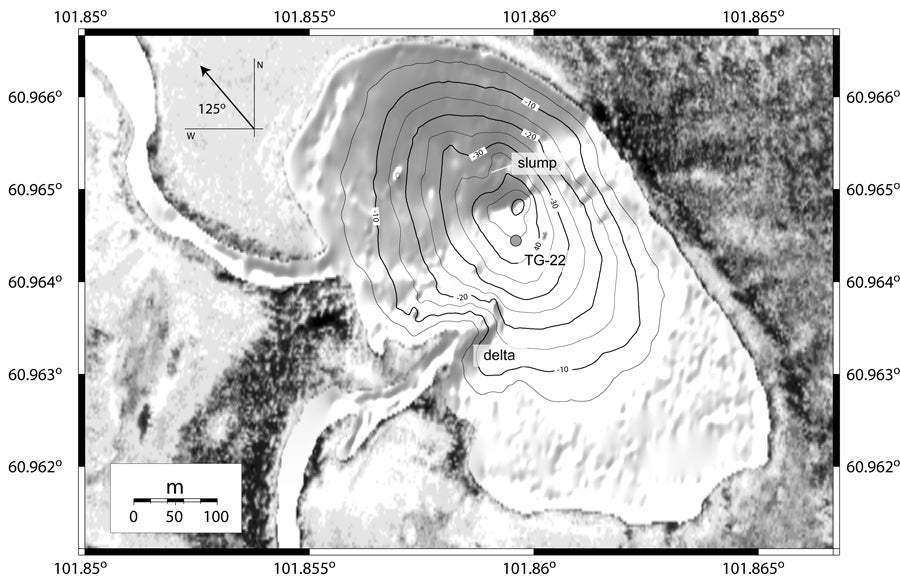
The standard version of the “Tunguska event” goes like this: A small asteroid or comet fragment entered Earth’s atmosphere June 30, 1908, over Siberia. It exploded from the heat of reentry before reaching the ground, flattening some 770 square miles (2,000 square kilometers) of forest near the Tunguska River.
A team led by physicist Giuseppe Longo of the University of Bologna, Italy, thinks there may be more to it. In an article published online June 15 in Terra Nova, the scientists report evidence that a chunk of the exploding object broke off and struck the ground 5 miles (8 km) northwest of the explosion’s epicenter, carving out today’s Lake Cheko.
Lake Cheko is an oblong freshwater lake about 1,340 feet (410 meters) on its long axis. No detailed maps of the remote region exist younger than 1928, so there is no simple way to establish whether Lake Cheko existed before the 1908 Tunguska event. The main evidence right now centers on the lake’s underwater contours. The researchers say the lake, although shallow, has the right bathymetry to be an impact crater – its shaped like a funnel instead of a gently sloping basin, like other lakes in the area. Lake Cheko is about 160 feet (50m) at maximum depth.
Also, geophysical mapping of the lake bottom revealed a dense region 33 feet (10m) below the lakebed sediment that could be a fragment of the object, or perhaps sediment compacted by the impact.
The lake is unlike classic impact craters in some ways. For example, it is elliptical in shape (most impact craters are round) and no blanket of debris is visible around its rim. The Italian team says these features can be explained if the fragment was relatively small (less than 33 feet [10m] across); if it were traveling at less than 23,000 mph (36,000 kph), or half the speed of most meteors; and if it landed in waterlogged, swampy forest underlain by permafrost. After impact, melting and degassing of the permafrost could have created today’s lima-bean-shaped Lake Cheko.
Harder evidence is needed to convince other scientists, however. Following expeditions to the site in 1999 and 2002, the team hopes to return in 2008 to collect sample cores of the lake bottom and, they hope, unearth a chunk of the infamous Tunguska object.









